The Jetsons have symbolized the future since the beginning of time. Well, okay, that's not quite true. The cartoon series has actually only been around since 1962.
Still, if you're of a certain age, it's hard to believe that, yes, there actually was a time when The Jetsons didn't exist, an era in which there was no such thing as George and Jane Jetson, not to mention Judy and Elroy and Astro and Rosey the Robot.
And even if you barely ever think give The Jetsons a second thought, I’m betting you think about the animated series at least once a year. At least, I know in my case, every New Year's Day, I look outside and think, "Dang. No flying cars yet."
More than any other cartoon or television series ever made, The Jetsons is linked to the future. Not bad for a cartoon that has been around for over 60 years.
In 1962, when The Jetsons flew into the nation's hearts and minds, other cartoons also made a national splash on television, shows like Deputy Dawg, Space Angel, Wally Gator and Lippy the Lion & Hardy Har Har, among others. I’m not saying that those shows don’t have their rabid fans, but there’s no question that the futuristic Jetsons became iconic in a way that its competitors didn't become. You don’t read a lot of news articles about the police and referencing Deputy Dawg, and I suspect you rarely hear of zookeepers or naturalists offering up Wally Gator cartoons as the reason they got into the business.
So to be forever associated with the future is quite a legacy for a cartoon that aired for only three seasons, with a 24 episode first season that aired from 1962 to 1963, and then an additional two seasons during the mid-1980s. All in all, there are 75 episodes of The Jetsons.
So how did this show come about? It may be a show about the future, but let’s take a look back – at The Jetsons.
Today's "TV Lesson" Breakdown:
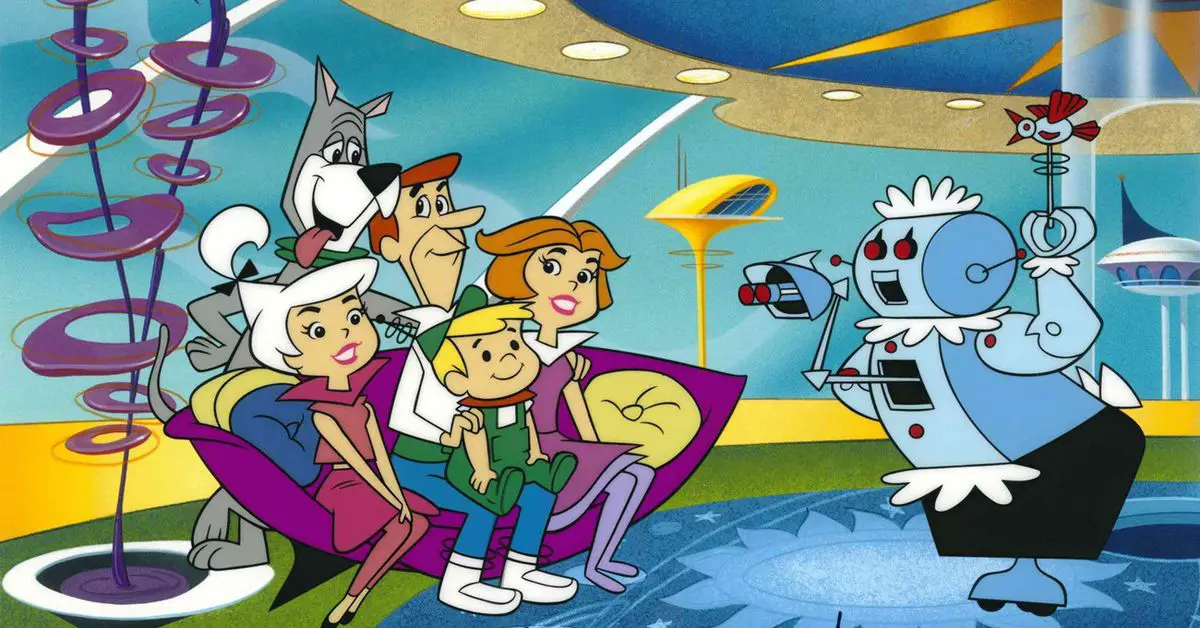
How The Jetsons Came to Be
Well, The Jetsons was in development for about a year before it aired in 1962. If somebody has actually taken credit for coming up with the actual idea for The Jetsons (was co-series creator Joe Barbera, for instance, brainstorming cartoon series ideas in the shower one morning, and he thought, “Ah, ha!”?), The TV Professor has yet to find that out.
But the creative minds at Hanna-Barbera evidently took the concept of their hugely popular prime time cartoon series The Flintstones (1960-1966), about a family of cave people in prehistoric times, and ran with it the other way, taking the Jetsons family far, far off into the future.
Actually not so far off – any more. While The Jetsons never said what year it was in the series, most press materials at the time explained that the cartoon was set in 2062 (Joe Barbera confirmed that in interviews as well), although at least one newspaper at the time erroneously assumed that the series was set a thousand years into the future.
In any case, that's the reason we aren’t living in homes way over the Earth and driving in flying cars. It isn’t 2062. We still have a little time yet.
Seriously, maybe by 2062, The Jetsons will be proven right, and flying cars will be a regular thing. After all, this was not a cartoon series that was just hastily tossed onto TV. The Jetsons was, after all, a cartoon designed for prime-time, and the hope was probably that it would run for at least as many seasons as The Flintstones (1960-1966) ultimately did. In other words, a lot of thought went into making The Jetsons.
In 1962, when the series came out, Joe Barbera said that Hanna-Barbera, along with their artists, had employed three designers to come up with visually arresting ideas for the future.
And it was tricky, Barbera added, because the future kept arriving.
"We have rooms of people who just sit there and think. Our biggest problem with The Jetsons is trying to keep ahead of scientific progress,” Barbera told Raymond Lowery, a newspaper columnist with The News & Observer, the newspaper for Raleigh, North Carolina, in an interview around the time The Jetsons first aired. “The series is set 100 years in the future, and contemporary progress is constantly overtaking our ideas. In one program we have a robot slot machine that follows you around, tapes you on the shoulder and says, 'Try your luck?' That show was no sooner in the can than the Sahara Hotel at Las Vegas installed slots with speakers, inviting customers to use the machines.”
Barbera continued: "We had a housewife driving a compact car to the supermarket, then folding it up and sticking it in her handbag. Just last week, GM disclosed it planned to build a collapsible car.”
(From a little Googling, it looks like that’s a project that has been worked on by car manufacturers for decades, apparently with little success.)
"Our moving sidewalks are already being used in shopping centers,” Barbera said. “When our series set the retirement age in 2062 at 110, a local newspaper editorial predicted the retirement age would be 100 long before the turn of the century. So you can see what a race it is for us to get an idea on film before it becomes a reality."
The timing of the series also helped capture the public’s imagination, according to Barbera, who told Lowery: “This is the right year for The Jetsons with the Space Age breaking wide open right before our eyes." Barbera said this right about the time President John F. Kennedy, delivered his “moon speech,” on September 12, 1962.
“Five years ago, the public wouldn't have been ready for it,” Barbera said.
I disagree with Barbera on that last point. He was being a good salesman for The Jetsons, but he was short-changing the public. There were a slew of science-fiction films that aired during the 1950s: Forbidden Plant, The Day the Earth Stood Still, 20,000 Leagues Under the Sea, Invasion of the Body Snatchers. I think 1950s audiences could have handled The Jetsons.
Why “The Jetsons” Looks the Way It Does
According to the book The Jetsons: The Official Cartoon Guide, written by Danny Graydon, the artists were inspired by books about the future, including the 1962 book 1975: And the Changes to Come by Arnold B. Barach, who was then a senior editor at Changing Times, a magazine that would later change its name to the far better known Kiplinger's Personal Finance.
Barach’s book was filled of photos of futuristic-looking homes and of forward-thinking gadgetry. For instance, the cover of Barach’s book had a photo of a man wearing a jet-pack, and inside the book were photos of futurist inventions like a bacon toaster, hovering cars and a television that would include a world map on it, so people could see where orbiting astronauts were, since space was clearly going to be a big part of everybody’s lives.
And why were all of the buildings in The Jetsons on poles, high above the Earth? Some people have suggested that Hanna-Barbera was influenced by the look of the new Space Needle in Seattle, though Barbera once said in an interview that they were based on drawings he saw at the 1939 World’s Fair in New York City.
“I saw round buildings kind of on a pedestal…I decided to add hydraulics to the pedestal so you could lift the apartment above the smog of clouds into the fresh, clean air,” Barbera told The Washington Post in 1999.
So that’s why the Jetsons all live high in the air – to stay above the smog on the planet. If you think about it, The Jetsons is a little dark. You could argue that the cartoon series was envisioning a world in which the ground was no longer inhabitable, where maybe the glaciers have melted and the sea has risen, and so everybody in this futuristic world had no choice but to travel in flying cars and live in apartments and homes far off the ground.
Or if you’re an optimist, you can imagine that with everybody traveling in flying cars and living in buildings far away from the Earth, nature’s thriving and doing great down below. Let’s hope that’s what was happening.
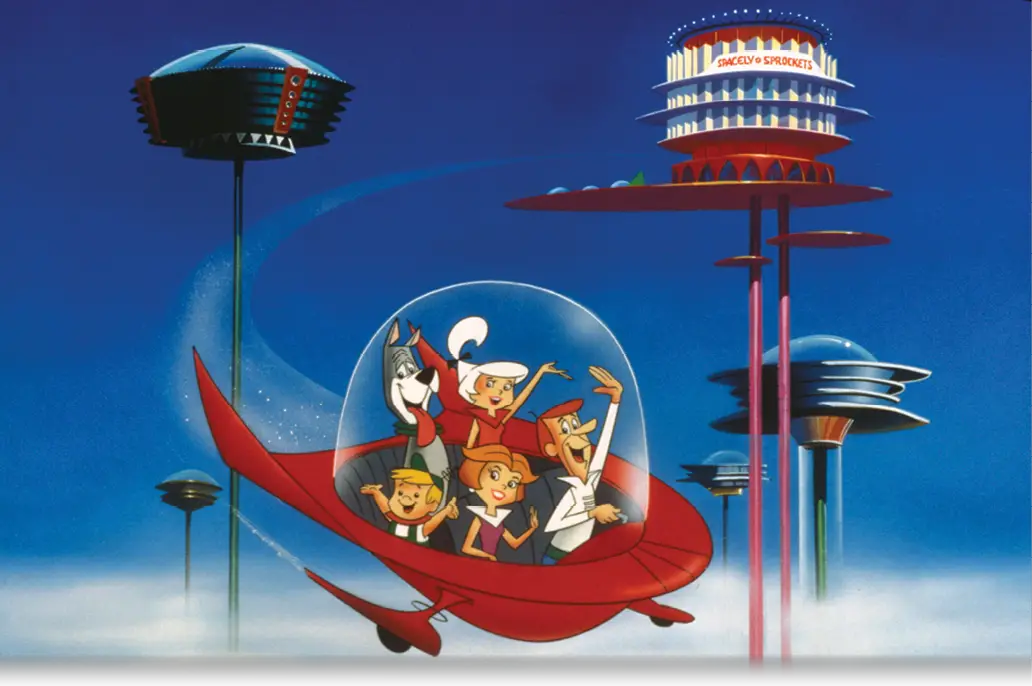
Some of the Inventions The Jetsons Predicted
The cartoon may seem corny now, but The Jetsons was definitely ahead of its time, which is probably why it has stuck around in the collective imagination for so long. Some of its ideas that are come to pass include…
- A robot vacuum cleaner. Granted, the ones that exist now won’t lift up a rug and sweep dirt under it, but still…
- 3D printing. In one episode, The Jetsons features a cement mold that builds instant buildings, floor by floor. Which is essentially how 3D printing in construction currently works.
- Moving sidewalks.
- Video-conferences and video calls.
- Smart watches.
- Drones.
- Holograms.
- The Pill-Cam. You swallow it, and the doctors will see reports of what the inside of your body looks like as it travels through your body. There is actually such a thing, but even if there wasn't, considering how surgeons can take photos of the inside of a patient’s body and do all sorts of surgeries without cutting into people, The Jetsons were pretty close to the mark when envisioning the future of medicine.
- Computer viruses. Mr. Spacely makes mention of one in an early episode. “We've discovered a very dangerous computer virus that you have to stop right away,” he tells George Jetson.
- Jane Jetson’s telephone’s TV screen allows her to put on a “morning mask” if she doesn’t want to be seen without her makeup on. Which sounds a lot like a filter app.
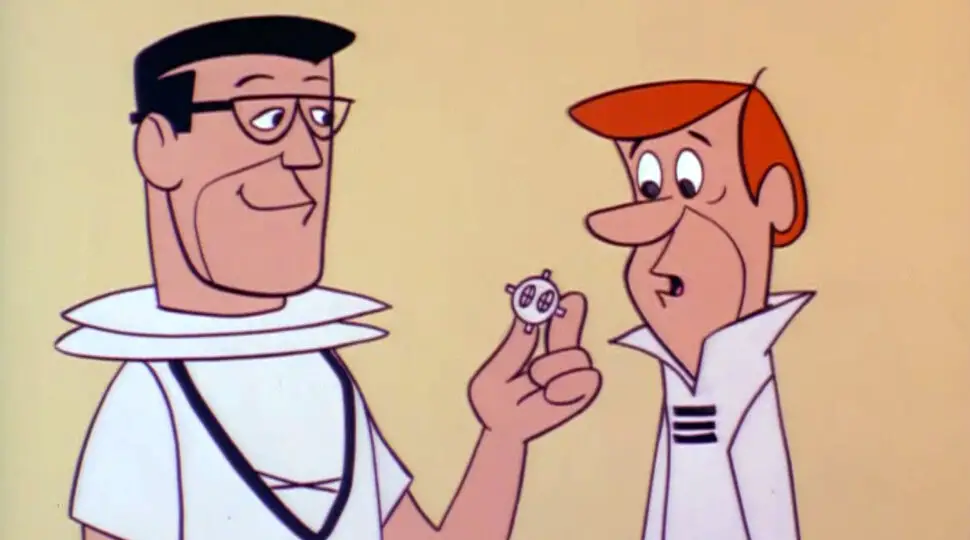
Some Jetsons predictions that didn’t quite work out.
- Shorter work hours. George Jetson had a three-hour, three-day week, and he was still griping about how hard work was. Arguably, with many people working side gigs and working from home, we’re not exactly there yet. Sure, some companies have four-day work weeks. Some. But generally, like the flying cars, we’re all still waiting for super short work weeks.
- Living longer. Life expectancy is far better in 2023 than in 1962. A baby born in 1962 could expect to live 70.02 years, according to Macrotrends.net. A baby born in 2023 can expect to live 79.11… geez, that’s not all that great of a jump, is it? Well, that data sort of makes the point of how The Jetsons was too optimistic about life expectancy. George Jetson’s dad retired when he was 110, and nobody’s quite living life like that, though arguably, centennials are living far better than they used to be. For instance, Norman Lear, classic TV legend (All in the Family, The Jeffersons, Maude, Good Times, One Day at a Time) who is approaching his 101st birthday, is currently developing a comedy drama for Netflix.
- Robot maids. We have Alexa and Siri and all of that, but probably nobody except maybe Jeff Bezos has a robotic maid following them around.
- Flying cars. OK, yeah, we’ve covered this. We still don’t have flying cars. I need to get over that.
The Jetsons and Inflation
Yes, it was easy to predict that inflation would be higher in the future, since that’s kind of always been a thing, and so not surprisingly, The Jetsons predicted it. But the series did a pretty good job of guessing how the price of everything would go way up.
In an early episode, George Jetson says, “We wouldn’t last on unemployment checks. One thousand a week doesn’t stretch very far these days.”
That joke was funny in 1962 when the average yearly income was $6,000. But The Jetsons was pretty accurate. Currently, weekly unemployment checks today range, on average, from $235 a week to $823. By 2062, you have to think unemployment checks will be $1,000 or more.
Random Jetsons-Related Trivia
These are just interesting little gems I found while researching The Jetsons and wanted to put somewhere…
- George Jetson was 40 years old in the series. Jane Jetson was 33 years old. Judy Jetson was 15. Elroy, the son, was 8 years old. And if you do the math, Jane was just 18 years old when she had Judy, and George was 25. The writers should have been thinking about character development as much as they were ideas about the future, but, okay, we’ll roll with it. We’ll assume that Jane was newly turned 18 when she met 25-year-old George Jetson, and that the 25-year-old wasn't dating a minor. And then given Judy's age, you kind of wonder if George felt obliged to propose to Jane, since she was carrying their child, and, well, maybe we shouldn't worry about that. Their marriage seems to have been a happy one.
- Before The Jetsons, George O’Hanlon auditioned for The Flintstones, hoping to land the role of Fred Flintstone. O'Hanlon didn’t get the part – actor Alan Reed did – but that audition paved the way for becoming the voice of George Jetson.
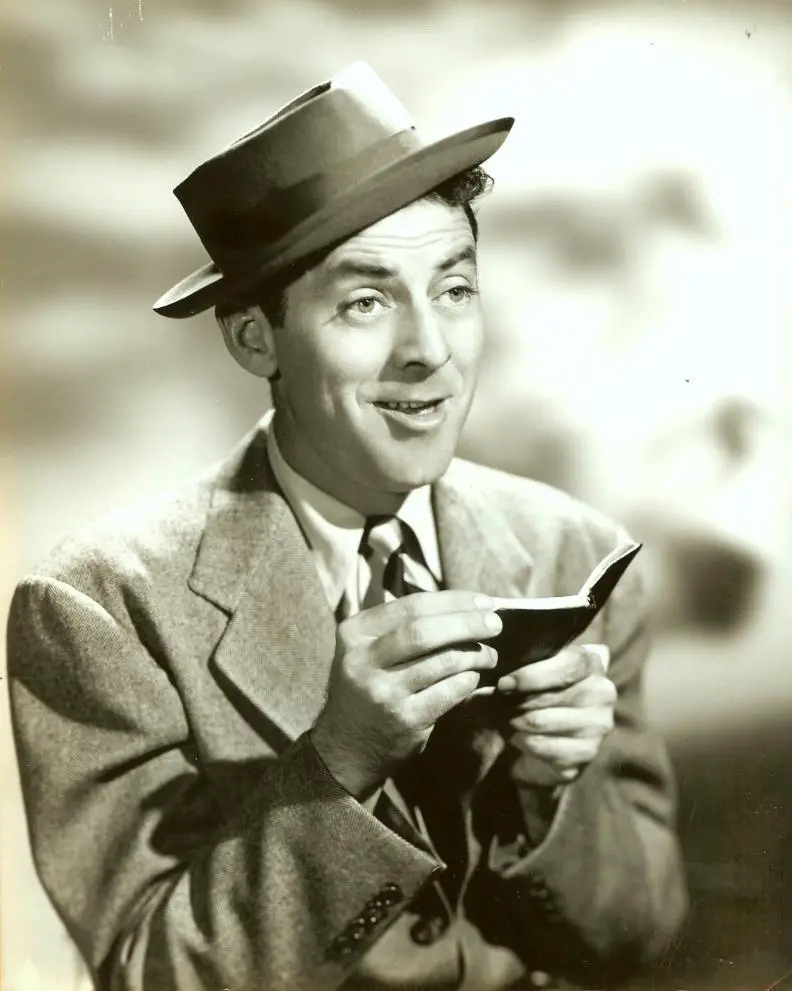
- Talk about weird coincidences or foreshadowing. In 1948, O'Hanlon had his own eponymous sitcom for a time in the 1940s, The George O'Hanlon Show. The sitcom suggests some hints of what was to come in the futuristic cartoon series he would later star in: O'Hanlon's character was often getting into trouble with his wife and his quick-tempered boss.
- But even weirder foreshadowing: In 1949, George O’Hanlon starred in a radio sitcom called, Me and Janie. A newspaper item describes O’Hanlon as playing a Dagwood Bumstead character (you know, from the newspaper comic strip, Blondie), and that’s interesting since Penny Singleton, who played Jane Jetson on the cartoon series The Jetsons, was the star of the Blondie movie series that ran from 1938 to 1950 (there were 28 Blondie feature films).
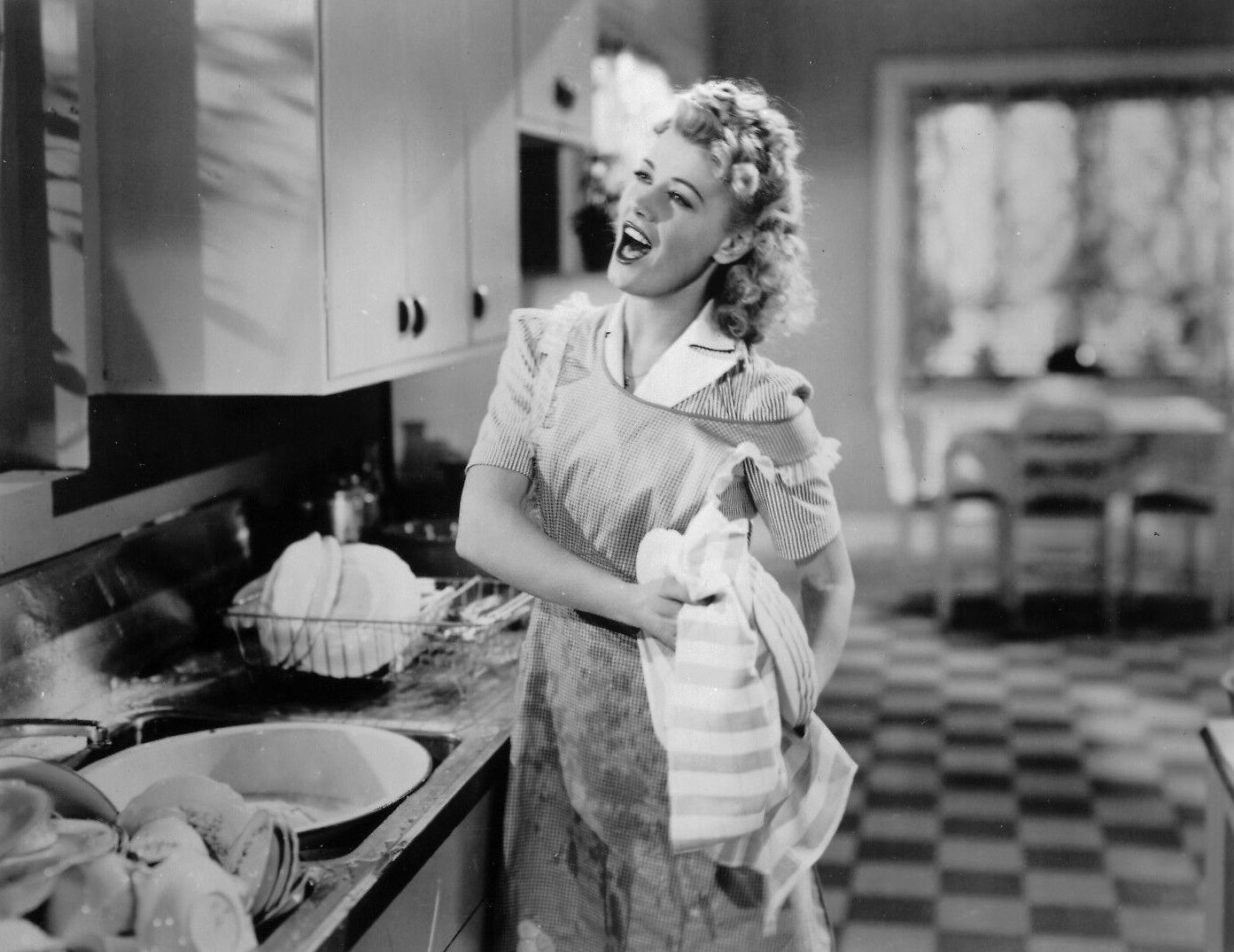
- From a 1962 newspaper: 250 artists were employed at the time at Hanna-Barbera, and of those artists, 130 of them worked from home. "Hanna-Barbera doesn't care if the artists live in tree houses and send their work in by carrier-pigeon--just so long as they produce,” wrote a columnist. So a show about the future was way ahead of its time when it came to remote working.
Where to watch The Jetsons (at the time of this writing): You can find The Jetsons in a lot of places, including Max and TubiTV.com, which is free.
Articles similar to this Jetsons article: You might enjoy this look back at the history of Saturday morning cartoons.

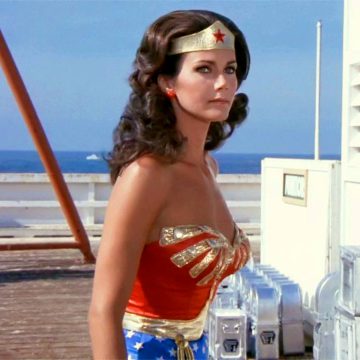
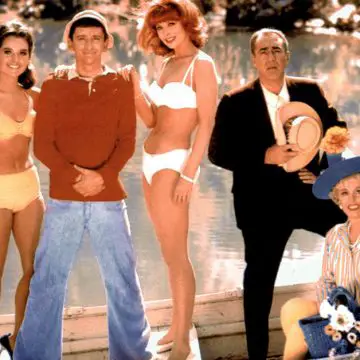
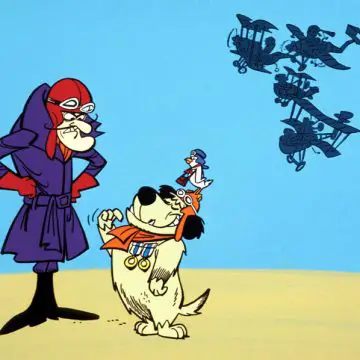

Leave a Reply